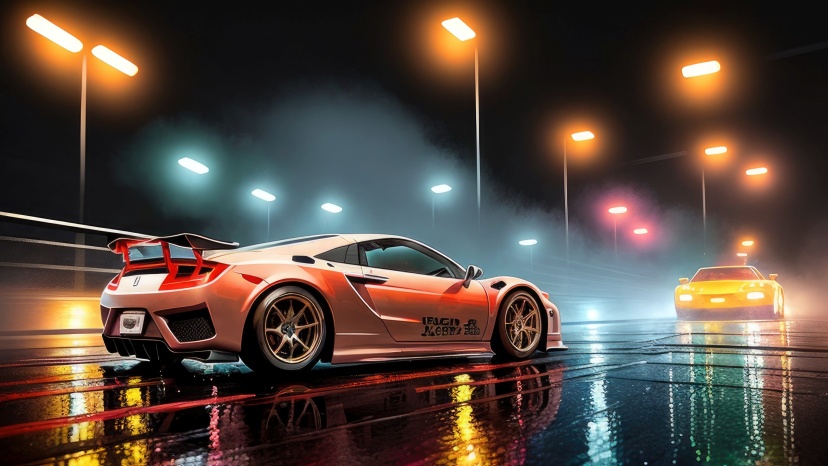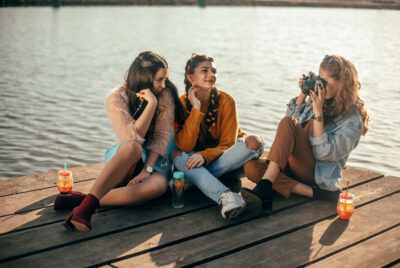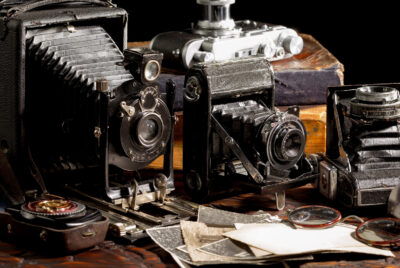Car Photography: Capturing the Beauty of Automobiles
I. Introduction
A. Definition of Car Photography
Car photography is the art of capturing the beauty,
design, and details of automobiles through
photography. It involves showcasing cars in a visually
appealing and captivating manner, highlighting their
unique features and capturing their essence.
>>See range of equipment for car photography CLICK HERE<<
B. Importance of Car Photography
Car photography holds great significance for car
enthusiasts, automotive brands, and collectors. It
allows them to document and share their passion for
cars, showcase the craftsmanship and engineering
prowess behind automotive designs, and create visual
narratives that evoke emotions and desire.
II. Essential Equipment for Car Photography
A. Camera
One of the essential pieces of equipment for car
photography is a reliable camera. A DSLR or mirrorless camera with manual controls and the ability to
interchange lenses is ideal. Invest in a camera with
a high-resolution sensor and good low-light
performance for capturing detailed and sharp images.
B. Lens
A quality lens is crucial for capturing the
aesthetics and details of cars. A wide-angle lens,
such as a 24-70mm or 16-35mm, is great for capturing
the overall car and its surroundings. A telephoto
lens, like a 70-200mm, allows you to focus on
specific details and create a compressed perspective.
C. Tripod
Using a sturdy tripod is highly recommended in car
photography, especially for long-exposure shots or
when you need to keep the camera steady. It helps
eliminate camera shake and ensures sharp images,
particularly when capturing static car shots or
during low-light conditions.
D. Lighting Equipment
Proper lighting is crucial in car photography to
highlight the shape, contours, and textures of the
vehicle. External lighting equipment, such as strobes
or continuous lights, can help you control and
enhance the lighting conditions. Use diffusers and
reflectors to soften harsh light and create more
pleasing and balanced illumination.
III. Tips for Successful Car Photography
A. Location and Background
Selecting the right location and background is
crucial in car photography. Choose environments that
complement the car’s style and personality. Look for
picturesque landscapes, urban settings with
interesting architecture, or secluded spots with
minimal distractions. Consider the colors, textures,
and lines of the surroundings to enhance the overall
composition.
B. Lighting Techniques
Mastering lighting techniques is key to capturing
stunning car photographs. Experiment with different
lighting angles, such as side lighting to highlight
the car’s contours or backlighting to create a
dramatic silhouette. Use light painting techniques
to selectively illuminate specific areas and create
a sense of depth and dimension.
C. Composition and Angles
Composition plays a vital role in car photography.
Experiment with different angles, such as low-angle
shots to emphasize the car’s presence or bird’s-eye
view shots to showcase its design from above.
Compose your shots using the rule of thirds or
leading lines to create visual interest and guide
the viewer’s eye through the frame.
D. Capturing Details
Pay attention to the details that make each car
unique. Capture close-up shots of intricate
emblems, badges, or interior features that showcase
craftsmanship. Focus on details like the curves,
reflections, or interesting textures that add
character to the car.
>>See range of equipment for car photography CLICK HERE<<
IV. Editing and Enhancing Car Photographs
A. Adjusting Exposure and Contrast
In the editing process, adjust the exposure and
contrast to achieve a balanced and well-exposed
image. Enhance the shadows and highlights to
maintain details in both dark and bright areas.
Experiment with curves, levels, or sliders to fine-
tune the overall tonal range.
B. Color Correction
Correct the colors in your car photographs to ensure
accuracy and visual appeal. Adjust the white balance
to remove any color casts. Fine-tune the saturation
and vibrancy to enhance or tone down specific
colors. Experiment with color grading techniques to
achieve a consistent and desired mood.
C. Enhancing Details
Sharpening and enhancing details can make your car
photographs more visually appealing. Use tools like
clarity, sharpening, or localized adjustments to
enhance the car’s textures, emphasize fine details,
and make the image pop. Be careful not to
overdo it and maintain a natural look.
V. Showcasing and Sharing Car Photography
A. Printing and Displaying
Print your favorite car photographs and display them
in frames or create a dedicated gallery wall to
showcase your work. Consider printing on high-quality
materials to ensure the colors and details are
accurately represented.
B. Online Portfolios and Social Media
Build an online portfolio or website to showcase your
car photography. Create dedicated albums or
galleries to highlight different cars or themes.
Share your work on social media platforms like
Instagram or Flickr to reach a wider audience and
connect with fellow car enthusiasts.
VI. Conclusion
Car photography is a captivating and rewarding
pursuit that allows you to combine your passion for
cars and photography. With the right equipment,
techniques, and creative vision, you can capture
stunning images that showcase the beauty, design,
and details of automobiles. Experiment, explore
different locations, and continue honing your skills
to develop your own unique style in car photography. With all this new information you have discovered here, you will want to know the best place to buy cameras and camera equipment. We give you 10 reasons why you should buy cameras and equipment from Amazon here.
>>See range of equipment for car photography CLICK HERE<<
VII. Car Photography FAQs
1. What camera settings are best for car
photography?
To capture sharp car photographs, use a moderate
aperture (around f/8 to f/11) to ensure a wide depth
of field. Use a low ISO setting (100-400) to minimize
noise. Adjust the shutter speed based on the
available light conditions and the effect you want
to achieve (e.g., freezing motion or creating motion
blur).
2. Are there specific lenses recommended for car
photography?
Wide-angle lenses are often preferred for car
photography as they allow you to capture the
full car along with its surroundings. However,
telephoto lenses can also be useful for focusing on
details and creating unique perspectives. Choose
lenses that suit your shooting style and the
desired composition.
3. How can I find the best locations for car
photography?
Look for interesting backgrounds, such as scenic
landscapes, urban areas with unique architecture, or
secluded spots with minimal distractions. Explore
different areas, ask fellow photographers or car
enthusiasts for recommendations, and scout locations
in advance to find the best spots that complement
your vision.
4. What are some creative lighting techniques
for car photography?
Experiment with different lighting angles and
sources. Use side lighting to accentuate the car’s
shape and contours, backlighting for dramatic
silhouettes, or light painting to selectively
illuminate specific areas. Don’t be afraid to
explore artificial lighting setups, like using
strobes or continuous lights, to control and enhance
the lighting conditions.
5. How can I make my car photography stand out
on social media platforms?
To make your car photographs stand out on social
media, focus on creating visually compelling images
that highlight the car’s unique features. Pay
attention to composition, lighting, and details. Use
appropriate hashtags and engage with the car
photography community by commenting and liking
similar content. Build a consistent style and
showcase your passion for cars through your captions
and storytelling.
6. What are some common mistakes to avoid in car photography?
While capturing car photographs, there are a few common mistakes to avoid:
1. Poor lighting: Avoid shooting in harsh or flat lighting conditions. Experiment with different lighting techniques to enhance the car’s appearance.
2. Cluttered backgrounds: Ensure the background doesn’t distract from the car. Look for clean and visually appealing backgrounds that complement the car’s style.
3. Lack of attention to details: Don’t overlook the small details that make each car unique. Capture close-up shots of emblems, badges, or intricate design elements.
4. Overediting: Avoid excessive editing that makes the photograph look unnatural. Aim for a balanced and realistic final result.
5. Ignoring composition: Composition is key in car photography. Pay attention to the placement of the car within the frame and utilize techniques like leading lines or the rule of thirds.
By avoiding these common mistakes, you can improve the quality and impact of your car photographs.
7. How can I develop my own unique style in car photography?
Developing your own unique style in car photography takes time and experimentation. Here are some tips to help you along the way:
1. Study and get inspired: Explore the work of other car photographers to gain inspiration and learn from their techniques. Identify elements that appeal to you and try to incorporate them into your own style.
2. Experiment with different angles and perspectives: Don’t be afraid to try unconventional angles or viewpoints. Capture the car from different angles to showcase its design and character.
3. Play with lighting: Experiment with various lighting techniques to create different moods and effects. Mastering light can significantly enhance your photographs.
4. Find your niche: Focus on a specific aspect of car photography that interests you. It could be vintage cars, exotic sports cars, or a particular genre such as automotive lifestyle photography. Specializing in a niche can help you develop a recognizable style.
5. Embrace post-processing: Develop your editing skills to fine-tune your photographs. Experiment with different editing styles and techniques to achieve the desired look.
Remember, developing your own style is an ongoing process. Keep practicing, refining your techniques, and adding your personal touch to your photographs.
Further reading
Check out our other relevant articles:
Check out our comprehensive guide to other photography subjects here.




